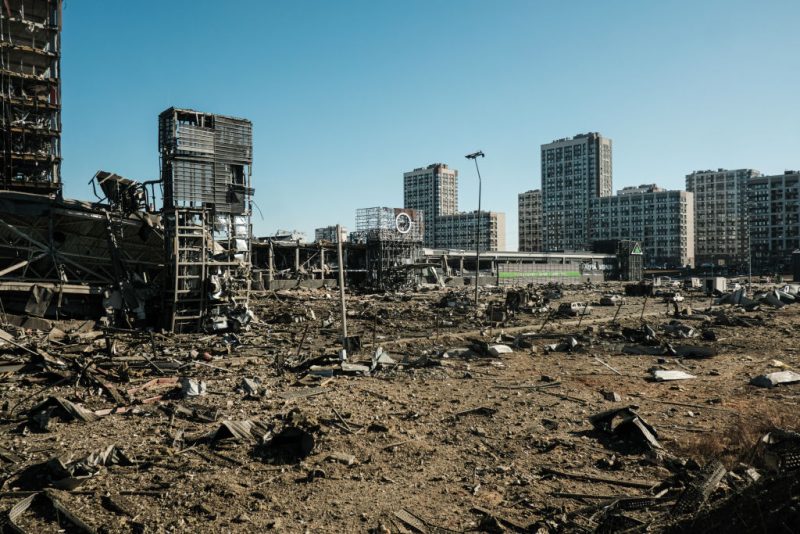Simon Nixon is an independent journalist and publisher of the Wealth of Nations newsletter on Substack. He is a leading commentator on European political economy and geoeconomics and was Chief European Commentator at The Wall Street Journal from 2013 to 2018.
The biggest challenge facing Ursula von der Leyen when she delivered her State of the European Union speech last week was to revive flagging hopes in the prospects for a “European Moment”. Few would argue that she succeeded.
But amid her long list of things that will never happen, that are already happening, or will take years to happen, there was one eye-catching proposal that provided some cause for optimism: her suggestion that the EU might use frozen Russian assets to provide a Reparation Loan for Ukraine.
It’s an idea that has been floating around Western capitals for well over a year but whose time has surely come. For months now, Russia has made a mockery of Donald Trump’s attempts to broker a peace deal, bombarding Ukraine with devastating nightly drone and missile assaults. At the same time, the US president’s decision to scale back American aid has left Ukraine facing a looming cash crunch. Debt-laden EU member states are hardly well-placed to provide the €100 billion or so a year that Ukraine needs to sustain its war effort. The best source of cash is the €200 billion of Russian state assets currently frozen in European accounts.
What has held the EU back until now is the fear that seizing those assets to give to Ukraine would break international law and undermine global confidence in the European financial system. But a reparation loan gets around this problem because the money will not be confiscated. Instead, it will be used to fund a loan to Ukraine that will be repaid in full, once Moscow has repaid any reparations for which an international tribunal has found it liable. Of course, if Russia refused to pay the reparations, it would forfeit the assets.
There are various ways that such a loan could be structured. The simplest would be to transfer the Russian cash to a special purpose vehicle which would then issue a loan to Ukraine, as proposed in a plan worked up by Hugo Dixon, the financial journalist, Lee Buchheit, a sovereign debt legal specialist who helped devise Greece’s 2012 debt restructuring, and Daleep Singh, vice chair of global asset manager PGIM. The Commission is also reported to be considering an alternative plan whereby the EU swaps the cash for long-term EU bonds.
In both cases, Kyiv would pledge future reparations from Russia as collateral for the loan. How much reparations Kyiv might be owed will be up to an international claims commission to decide. This means that the claim will carry the force of international law. The United Nations General Assembly voted overwhelmingly in 2022 to establish such a commission and work on how such a commission might work in practice is ongoing.

A shopping mall in Kyiv which was hit by a Russian missile, killing at least 4. (Photo by Matthew Hatcher/SOPA Images/LightRocket via Getty Images)
Of course, obstacles will need to be overcome. Guarantees will be needed to ensure that the cash will be repaid in the event that Russia succeeds in challenging any reparations claim. Similarly, Belgium will need an indemnity given that it is home to Euroclear where the bulk of the assets are held. Von der Leyen acknowledged last week that the risk “will have to be carried collectively. Ideally, that would be done by unanimity, which would in any case be essential if EU bonds are involved. But the Commission is having to look at what can be done by qualified majority in case Putin-friendly governments in Hungary and Slovakia try to scupper the plan.
That’s why the most important intervention this week may have been that of Scott Bessent. In a statement following last weekend’s meeting of G7 finance ministers, the US Treasury secretary “welcomed commitments… to explore using immobilised Russian sovereign assets to fund Ukraine’s defence”. So far, the Trump administration has been frustratingly reluctant to impose extra sanctions on Russia, raising doubts about its commitment to Ukraine. But its message to Hungary and Slovakia, whose leaders are ideological allies of the US president, is that on this question of frozen Russian assets, America wants Europe to act.
Indeed, delivering on this reparation loan is now a key test of Europe’s geopolitical pretensions. The EU has shown at various times in its recent history that it can act swiftly in a crisis. The current situation calls for similar resolve. There is an informal ECOFIN meeting in Copenhagen on Saturday when the finance ministers of Ukraine, the UK and Canada will also be present, as well as an informal leaders summit on October 1. The Commission wants a deal by the end of the year. Failure would only confirm Europe’s weakness.
On the other hand, success would send a powerful signal to Moscow. It is a sign of how much the proposal has rattled the Kremlin that Dmitri Medvedev, Russia’s former president, has already taken to social media promising to “persecute Euro-degenerates… who will try to seize our property until the end of time”.
Moscow has long assumed that it can not only win a war of attrition on the battlefield but that it can wear down western unity. A reparation loan would challenge both assumptions. That wouldn’t just be good for Ukrainian morale; it would be good for European morale too. It’s time to get this done.
